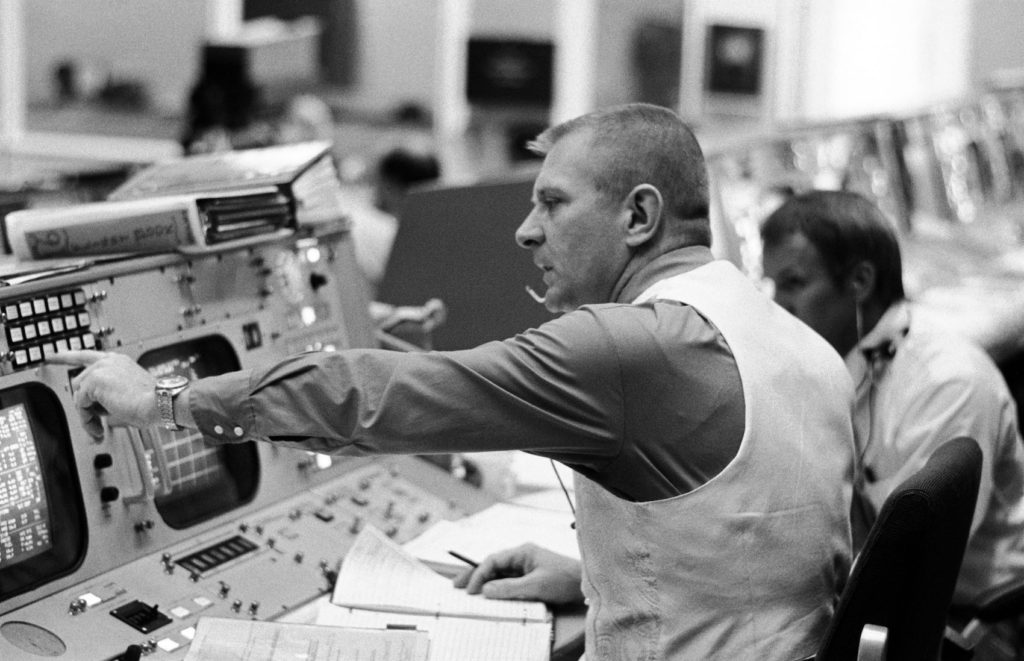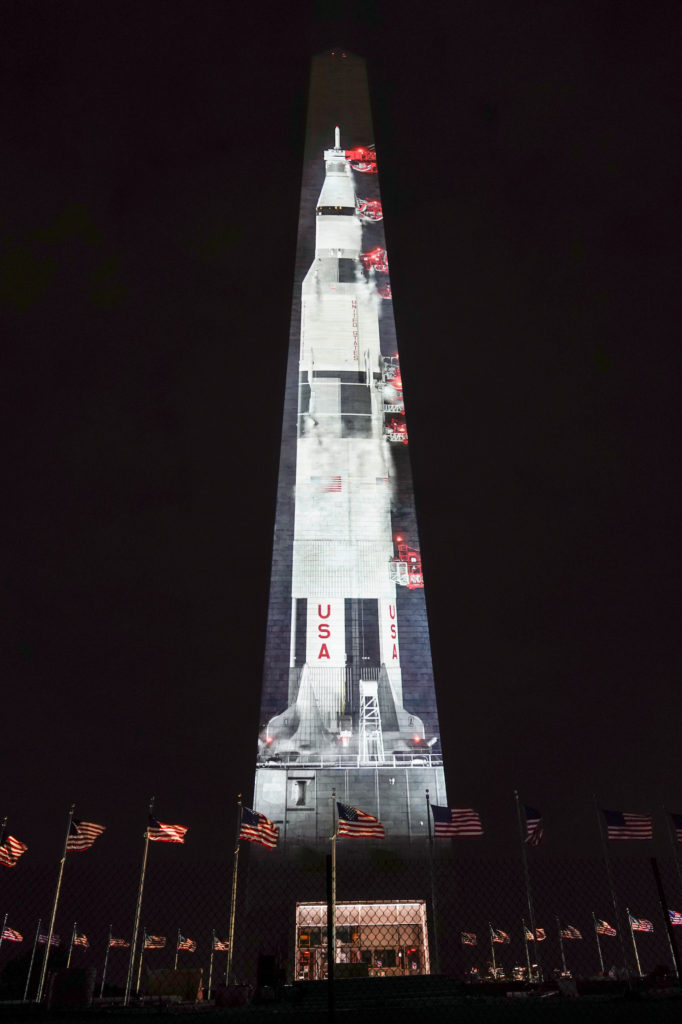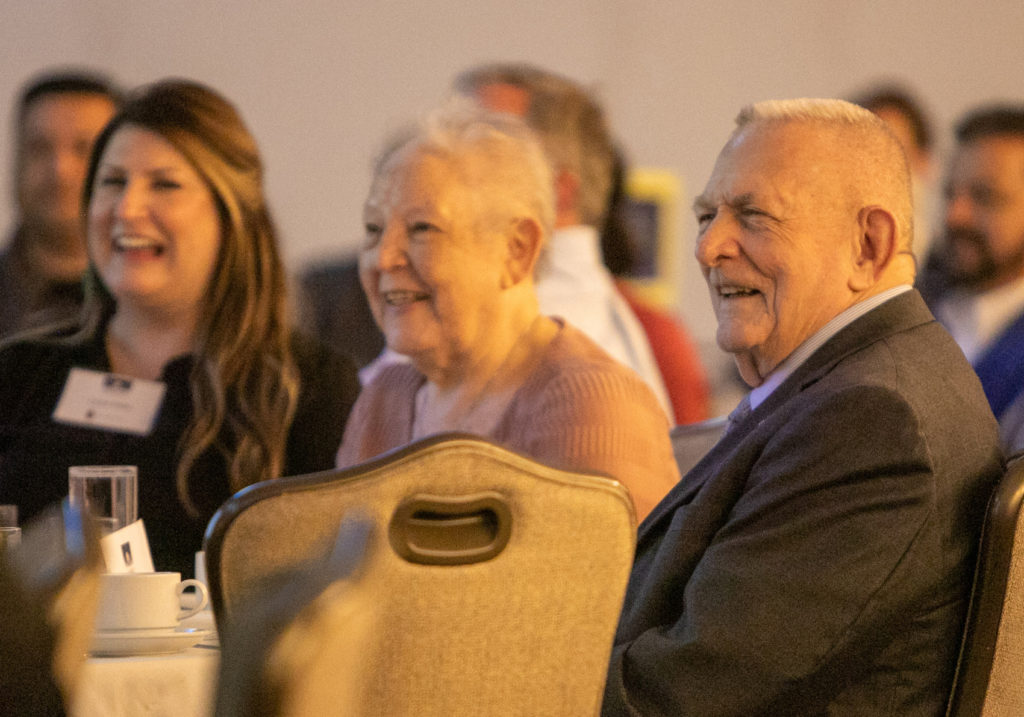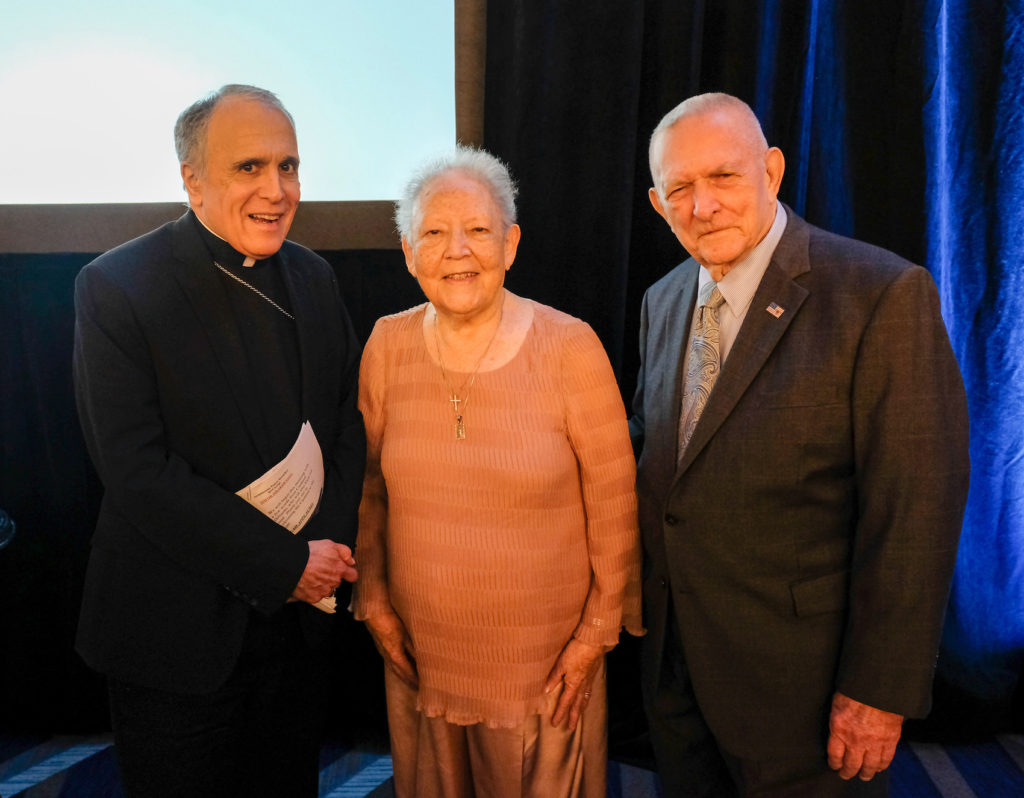HOUSTON (CNS) — Gene Kranz, NASA flight director during the 1969 landing of the first man on the moon, spoke about faith and family to more than 1,000 attending the Galveston Houston Archdiocesan Prayer Breakfast July 30.
In attendance were four of his daughters, among his six children, who praised all that Kranz has done to commemorate his fellow space pioneers and the historic event. His long list of public appearances included being acknowledged by President Donald Trump during the Fourth of July celebrations in Washington.

An aerospace engineer and former U.S. fighter pilot in Korea, Kranz retired from NASA in 1994 after 37 years of federal service working on Mercury, Apollo and Shuttle space missions. He told the crowd at the breakfast, “God’s mark is everywhere and is on everything.”
He recalled growing up in Ohio and being an altar boy at St. Agnes Catholic Church next door to his home. His father, a World War I vet, died when Kranz was only 7. So his mother opened up their house to take in boarders. Many of them were soldiers on leave.
“I remember serving at morning Mass that turned into weddings for the soldiers about to ship off. Our priest, Fr. John Jamison, was a father figure to many whose fathers were fighting in the war,” he said.
With his interest in the military and flying firmly entrenched, he completed pilot training at Lackland Air Force Base in Texas in 1955. Shortly after receiving his wings, Kranz married Marta Cadena, who sewed his vests made famous during Apollo missions, including one exhibited in the Smithsonian National Air and Space Museum.
Looking for work as a test pilot, he was reading a trade journal. “Whenever there is a fork in the road and a major decision, it’s always part of God’s plan,” he said.

“The government was looking into the feasibility of putting Americans in space flight,” Kranz said. He applied for the program.
Kranz shared how he and Marta are now parishioners at Shrine of the True Cross Catholic Church in Dickinson, Texas, where he taught Continuing Christian Education in past years and is an active member of the Knights of Columbus. He showed a photo projected on a screen of his tattered copy of “The Shield of Faith: Reflections and Prayers for Wartime” written by then-Msgr. Fulton J. Sheen.
“I pulled this prayer book out many a time,” Kranz said. “I’ve been asked if I ever felt stress. No matter, I always felt the presence of God in my work and life.”

During July, Kranz was bombarded with media interviews from coast to coast and celebrations for the 50th anniversary of the lunar landing. One of his daughters, Jeannie Kranz, a public relations professional, helped her father, now 85, keep up with the demand.
That included being part of the Fourth of July “Salute to America” at the Lincoln Memorial where Trump praised the dedication of Kranz in the historic Apollo 11 moon landing among others recognized.
“Gene,” Trump said in news reports covering the event, “I want you to know that we’re going to be back on the moon very soon and someday soon, we will plant the American flag on Mars.”
Jeannie said, “To hear our father recognized by the president among so many great people like a Medal of Honor winner was amazing!”
Kranz returned to Washington later in the month to testify in a Senate aviation and space subcommittee hearing chaired by Sen. Ted Cruz, R-Texas, on the future of NASA’s space exploration.

During testimony, Kranz said this was an exciting time for NASA, which had lost focus since the end of the Space Shuttle program in 2011. “We need to restore the passion, energy and imagination,” Kranz testified.
But he also remembers the heartache over the dangers of space travel. At the prayer breakfast, Kranz showed a 1967 photo of three smiling Apollo 1 astronauts Gus Grissom, Ed White and Roger Chafee who were lost in a flash fire that swept through the oxygen-rich command module during a launch rehearsal test.
“We heard, ‘Fire!'” Kranz said.
Both the crew inside and technicians outside the hatch door tried to quickly open it to no avail. “There was no way to save them,” he said.
It took more than 18 months and extensive redesigns, including a new hatch door that opened in seconds, before another mission launched.
Daughter Lucy Kranz, who retired from NASA after focusing on the business side of its contracts, said she was 10 years old when Apollo 11 landed on the moon.
“I remember a TV being rolled into our classroom at Shrine of the True Cross school and everyone was excited. To me, it was just Dad’s work. We always thought we’d be right back there on the moon again,” Lucy said.
As part of the Houston Space Center’s 50th anniversary celebrations commemorating Apollo 11’s eight-day roundtrip to the moon, Kranz spoke to thousands of people attending.
But at the actual time of the lunar landing anniversary July 20, Kranz and his remaining crew gathered at the lit-up consoles of the remodeled Mission Control to relive that time with only each other, his daughter recalled.
“At that exact time when the Apollo 11 crew landed on the moon (3:17 p.m. Central time), my dad and his remaining team were right there in Mission Control,” commiserating together complete with amber ashtrays and retro coffee cups, she said.
At the time of the actual moon landing, Kranz has recalled in many interviews, there were about 100 people, including politicians in a viewing room adjacent to Mission Control, and they erupted in cheering, stomping and clapping.
“You could hear the sound coming through the double glass windows there and it’s seeping into the room,” Kranz has noted. “And my team has to be as cool as a cucumber” as they checked on the astronauts’ safety and preparation to walk on the moon’s surface.
— By Jo Ann Zuniga, Catholic News Service. Zuniga writes for the Texas Catholic Herald, the newspaper of the Archdiocese of Galveston-Houston.






